Want to get more done and stay organized? A daily planner can help you achieve your goals efficiently. Studies show writing down goals boosts success rates by 42%. Here’s how to make the most of your planner:
Key takeaway: A planner isn’t just a schedule – it’s a tool to manage your time, track goals, and stay productive. Start small, stay consistent, and adjust as needed to build a planning habit that works for you.
Choose a planner that complements your workflow and personal preferences.
Planners come in various formats to suit different needs. Some offer a structured approach, while others cater to those who prefer a more flexible and creative setup.
Here’s a breakdown of popular planner options:
| Planner Type | Best For | Key Features | Ideal User |
|---|---|---|---|
| Pre-designed Daily | Detailed scheduling | Hour-by-hour breakdowns and task lists | Professionals with packed schedules |
| Weekly Layout | Overview planning | 7-day spreads with goal sections | People juggling multiple projects |
| Bullet Journal | Custom organization | Blank pages for personal layouts | Creative minds who enjoy flexibility |
| Digital Planner | Tech-savvy users | Cloud syncing and easy editing | Remote workers needing device access |
| Academic | Semester-specific planning | Class schedules and assignment tracking | Students and educators |
"You need to know how you’ll use it, where you’ll use it, and what you’ll be tracking in order to get the one that you’ll use consistently." – Katelyn Denning, Productivity
Your daily habits and organizational needs should guide your choice. Think about these factors:
If you’re new to planning, start with a simple option. It’s a great way to build a routine without feeling overwhelmed. Once you’re comfortable, you can explore more tailored formats that suit your evolving needs.
After picking your planner, the next step is setting it up to fit your daily life.
Once you’ve picked your planner, it’s time to organize it in a way that keeps you on track and productive. A good setup helps you manage your time and focus on what matters most.
Set up your planner to match your daily routine by dividing each page into key sections:
"Periods of open-ended reactivity can be blocked off like any other type of obligation. Even if you’re blocking most of your day for reactive work, for example, the fact that you’re controlling your schedule will allow you to dedicate some small blocks (perhaps at the schedule periphery) to deeper pursuits." – Cal Newport
Once your layout is ready, start planning your day with time blocks.
Time blocking helps you structure your day into focused segments. Here’s how you can use it effectively:
| Time Block Type | Purpose | Example Duration |
|---|---|---|
| Deep Work | Focused tasks needing attention | 2–3 hours |
| Shallow Work | Routine or quick tasks | 30–60 minutes |
| Buffer Time | For transitions or surprises | 15–30 minutes |
| Breaks | Time to rest and recharge | 15–20 minutes |
Cal Newport explains, "A 40 hour time-blocked work week, I estimate, produces the same amount of output as a 60+ hour work week pursued without structure."
Use the Eisenhower Matrix to prioritize your tasks and focus on what’s most important:
| Urgency/Importance | Urgent: Do First (e.g., critical deadlines, key meetings) | Not Urgent: Schedule (e.g., long-term planning, skill-building) |
|---|---|---|
| Not Important | Delegate (e.g., routine emails, basic admin tasks) | Eliminate (e.g., unnecessary meetings, social media distractions) |
Pick your top three priorities for the day. This keeps you from feeling overwhelmed and ensures steady progress. In fact, studies show that 71% of knowledge workers reported burnout in 2020, with 32% pointing to the inability to disconnect as a major factor.
Turn your planner into a space that feels like you – a mix of style and functionality that keeps you motivated and organized. A touch of creativity can make planning something you actually look forward to.
Give your planner a visual boost with stickers that are both fun and functional. Brands like Dark Moon Paper offer themed kits like "Lilac Dusk" and "Winter Hygge" to match your vibe. Use these stickers to keep things neat and organized:
| Sticker Type | Use | Placement |
|---|---|---|
| Task Flags | Highlight important tasks | Next to high-priority items |
| Icons | Categorize tasks visually | In your task list section |
| Trackers | Keep tabs on habits or goals | Weekly overview area |
| Headers | Divide sections clearly | At the top of daily pages |
Leave enough blank space to avoid making your planner feel cluttered. Combine these decorative touches with clear, intentional writing for a balanced and effective layout.
Neat handwriting makes your planner easier to use and more enjoyable to look at. Try these tips to sharpen your writing skills:
For key entries like goals or deadlines, consider using brush pens for calligraphy to make them stand out while still keeping everything readable.
Once your planner looks polished and your writing is clear, add a personal touch with quotes or images. Place motivational quotes or uplifting images on monthly covers, weekly spreads, or even in small corners of daily pages. These little additions can inspire you without overwhelming the space, keeping everything functional while reflecting your personality.
Sticking to a planning routine takes effort and consistency. Here are practical tips to tackle common challenges and make planning a seamless part of your daily life.
Mistakes are part of the process – don’t let them hold you back. Dr. Tzall highlights, "Consistency is most important". Be kind to yourself when errors happen; they don’t define your progress. Instead of dwelling on them, focus on how you can improve. Handling incomplete tasks is another key skill to develop.
Think of unfinished tasks as opportunities to refine your approach. For quick tasks under two minutes, tackle them right away. For bigger ones, break them into smaller steps and reschedule them using time blocks. This method keeps you moving forward without feeling overwhelmed. Incorporating planning into your daily routine can make these strategies second nature.
Create simple morning and evening rituals. Start your day by reviewing your agenda and end it by reflecting on your progress. Use strategies like task ranking and time blocking to keep your planning structured and effective.
"If sticking with a routine is not effective or is too stressful, then you need to give yourself permission to say, ‘Let me try something else.’ Giving yourself grace to step back and evaluate how it is working for you is healthy for your mental well-being." – Dr. Tzall
"Assessing your planner stack means stepping back and taking an honest, realistic look at a few key things that will help you move forward with a system you are happy with and will work better for you in the long run"
Focus on identifying your top three priorities each day. Keep your planner in a visible spot, like your desk, to remind you to stay on track. Dedicate specific times – like during your morning coffee or after dinner – to review and update your plans. Stay flexible and adjust as needed.
Keeping tabs on your progress ensures your actions align with your goals and keeps your planning system working effectively.
David Allen, the author of Getting Things Done, highlights the importance of regular reviews: "The Weekly Review is the critical success factor for marrying your larger commitments to your day-to-day activities". Building a habit of consistent reviews can help you stay on track.
Set aside 15–30 minutes each day to reflect on what you’ve accomplished, adjust your priorities, update task statuses, and identify any roadblocks. For weekly reviews, dedicate at least an hour. Choose a fixed time and place for these sessions to create a routine. During your weekly review, you can:
"If you don’t have time to review your plan, you don’t have time to not review your plan. If you don’t have time to make a plan, you don’t have time to not make a plan."
In addition to reviewing daily and weekly tasks, it’s essential to keep an eye on your bigger, long-term goals.
Daily and weekly reviews help refine short-term tasks, but monitoring your goals ensures you’re making steady progress over time. Balancing tracking with flexibility is key to staying on course.
| Review Type | Frequency | Focus Areas |
|---|---|---|
| Daily | Every morning/evening | Task completion, daily priorities |
| Weekly | Once per week | Short-term goals, upcoming tasks |
| Monthly | End of the month | Medium-term goals, strategy updates |
| Quarterly | Every 3 months | Long-term goals, overall progress |
| Annual | Year-end | Yearly achievements, new goal setting |
"The Weekly Review will sharpen your intuitive focus on your important projects as you deal with the flood of new input and potential distractions coming at you the rest of the week".
Leave some blank space in your planner to serve as a buffer against burnout. Choose a measurable metric for each long-term goal, record both successes and challenges, and break tasks into smaller steps rather than simply listing deadlines. Adjust your strategies as needed to stay on track.
As your circumstances and goals change, your review system should adapt too. Finding the right review schedule for your unique needs can keep you accountable and help you measure your progress effectively.
Planning effectively combines clear organization with consistent follow-through. Research highlights that writing down goals increases the likelihood of achieving them by 42%, emphasizing the value of using a daily planner.
Cal Newport’s insight – "A 40 hour time-blocked work week, I estimate, produces the same amount of output as a 60+ hour work week pursued without structure" – shows how structured scheduling can significantly boost productivity without requiring more hours.
Your planner fulfills three key roles:
| Function | Purpose | Impact |
|---|---|---|
| Time Management | Organizing your schedule with time blocking | Planning saves up to ten minutes for every minute spent |
| Goal Achievement | Breaking big goals into manageable steps | Reduces stress and gives clear direction |
| Progress Tracking | Reviewing and refining regularly | Keeps you accountable and moving forward |
These roles highlight how a well-used planner can enhance both your efficiency and focus.
Make your planner work for you by personalizing it to fit your needs. Productivity expert Erin Condren advises:
"Your daily planner is more than a running list of daily tasks or meetings you need to get through; it’s also a source of daily inspiration. Use it to plan a life that works for you, one day at a time. And keep in mind that it’s okay (even encouraged) to stay flexible with your planning approach."
Start simple: identify your top three daily priorities, use time blocking, and regularly review your progress. This approach ensures your planner evolves alongside your goals. As Harvard researcher Daniel Gilbert reminds us:
"A wandering mind is not a happy mind."
Stickers Made for Planning
Our custom stickers are a fuss-free way to brighten up your planner pages with perfectly-sized designs that add a spark of personality to every layout.
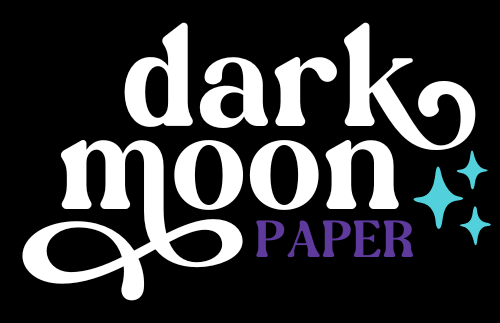
Why use planner stickers?
Planner stickers make organizing easy, fun, and personal! Add color, creativity, and structure to every page, transforming your planner into a tool that reflects you. Perfect for tracking, decorating, and staying inspired daily!
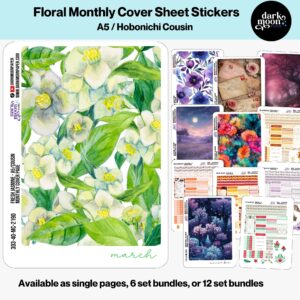
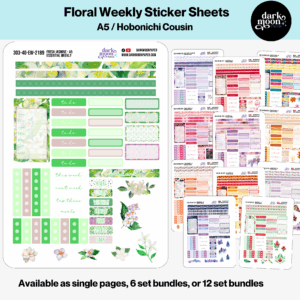
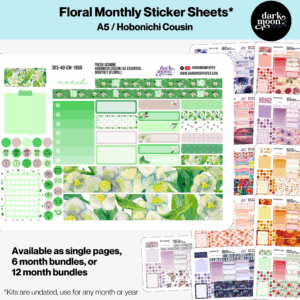
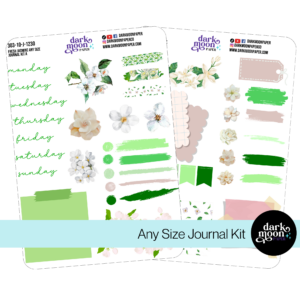
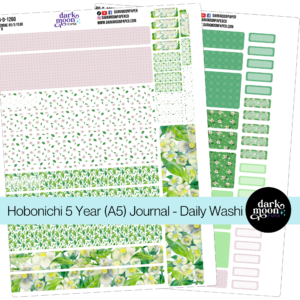
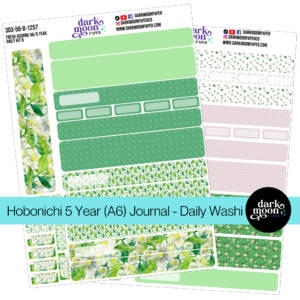
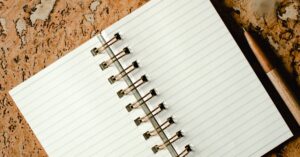
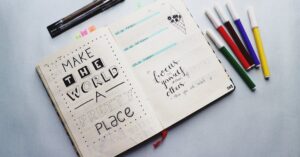
Hello and welcome!
I’m Rachael Snow, a lifelong artist and entrepreneur, and I started Dark Moon Paper to blend my love of art, technology, and the mysterious beauty of the world around us. My sticker kits are meant to set the mood, tell a story, and give you a little escape from the ordinary.
I work from my cozy studio tucked away in the beautiful woods of Oregon, surrounded by nature and a dark night sky full of stars.